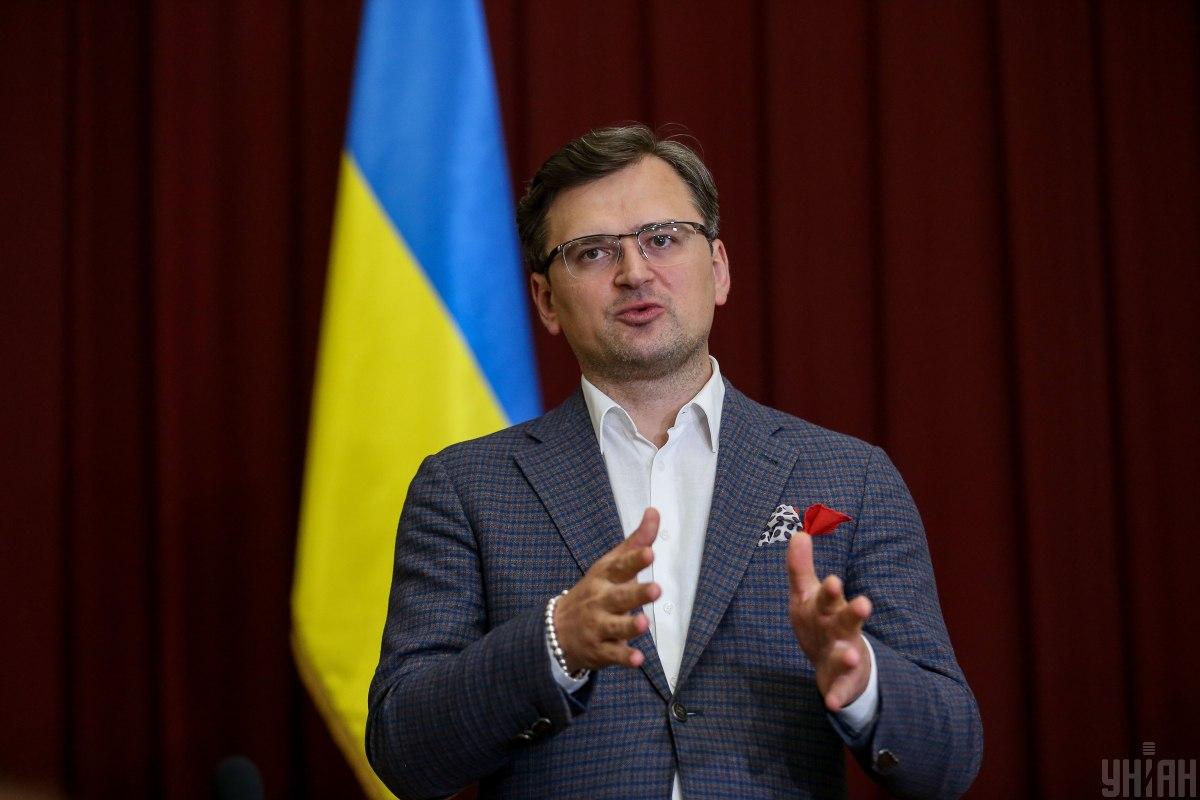
Ukrainian Foreign Minister Dmytro Kuleba says yesterday's visit of U.S. Secretary of State Anthony Blinken to Kyiv will lead to a certain de-escalation on the Russia-Ukraine border.
At the same time, it won't remove the Russian threat, Kuleba told a panel show on 1+1 TV, according to an UNIAN correspondent.
"There won't be complete de-escalation," Kuleba said.
"I'd like to note that we all remember the other week when Russia solemnly announced the completion of [military] exercises, that they're starting to withdraw the troops deployed for the drills. We are watching this pullback very closely, and our American partners are watching it very closely. You know how the Soviet Union used to have those trials for show? This is how we're now seeing a withdrawal of Russian forces, also for show," said Kuleba.
"That is, all this armada amassed in the occupied Crimea, in Donbas, along the Russia-Ukraine border, is shrinking microscopically, absolutely not at the rate that would allow us relaxing," the minister emphasized.
Read alsoU.S. experts show Russian military equipment transferred to Crimea amid recent build-up (Photo)At the same time, Kuleba said diplomacy is a complex game involving a variety of steps "pushing Russia a little bit away from our border and restraining it, not allowing to advance."
Russian troops build-up
- On March 30, 2021, Commander-in-Chief of the Armed Forces of Ukraine, Colonel-General Ruslan Khomchak said Russia had deployed 28 battalion tactical groups along the state border of Ukraine and in the temporarily occupied territories. It is also said to be planning to bring up to 25 battalion tactical groups under the guise of preparing for military drills. Such actions pose a threat to Ukraine's military security.
- According to the Armed Forces of Ukraine, enemy troops are reinforcing their advanced units with reconnaissance teams and sniper pairs, involving Russian army instructors in personnel training. Russia-led forces' artillery units are reportedly on full alert in certain districts, including villages and towns in occupied Ukrainian territory.
- The U.S. European Command raised its alert status to the highest level after fighting had resumed between Russia-led forces and Ukrainian troops in Donetsk region.
- The U.S. Department of Defense said it was "aware of Russian troop movements" on Ukraine's borders and was concerned about recent escalations of Russian aggression in eastern Ukraine.
- The United States, finding reports of Russian military movements on Ukraine's border credible, asked Moscow to explain the "provocations" and is ready to engage.
- Ukrainian President Volodymyr Zelensky said Moscow was trying to put pressure on Kyiv by amassing its military forces along the Russian-Ukrainian border.
- On April 8, 2021, Khomchak assured the situation was under control, and the Ukrainian military was ready to respond to the escalation both in the temporarily occupied territory of Luhansk and Donetsk regions and along the entire Ukrainian-Russian border.
- On April 22, 2021, Russian Defense Minister Sergei Shoigu said his country would begin the withdrawal of troops, which had taken part in military exercises in occupied Crimea and near the borders of Ukraine, to their permanent bases in the Southern and Western Military Districts.

